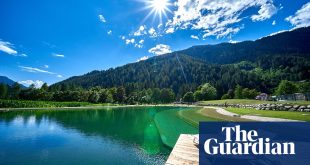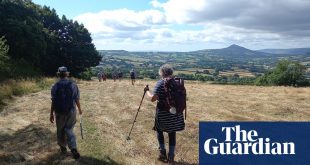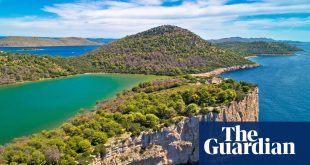In about 1628 Mrs Thomasin Farrer, resident of Scarborough, made an incredible discovery: the town had a beach. Observant folk had previously noticed these distinctive sandy features of a coastal nature, but dismissed them as awful places where ships ran aground and monsters got washed up. They were wastelands.
Thomasin’s genius was to see them differently. Under Scarborough’s South Cliff she had discovered a bubbling spring that allegedly cured many ailments, a conclusion soon backed up by many learned physicians (all with practices in the town, coincidentally). As the venue for this fount of restorative goodness, the beach and sea were obviously health-giving, too.
By 1720, when Daniel Defoe pitched up, the trickle of sickly visitors had become a tidal wave. By 1735, hotels and bathing huts were transforming Scarborough into Great Britain’s first seaside resort. But even more significant, the beach had gone from unwanted dumping ground to pleasure park. Almost four centuries later, we still go down to the beach. Fashions, however, don’t stand still. The simple Thomasin beach of therapeutic water, sun and sand is fading away like a cheap fake tan. In the words of writer Marriott Edgar, concerning an infamous trip to Blackpool in The Lion and Albert:
They didn’t think much to the ocean
The waves they was piddlin’ and small
There was no wrecks and nobody drowneded
’Fact, nothin’ to laugh at at all!
Like Mr and Mrs Ramsbottom in the poem, we want more from our beaches, not a drowning of course, but something unexpected and marvellous, like a shipwreck or a washed-up monster. With all due respect to our long coasts, a swathe of sand and a few piddlin’ waves is no longer good enough: what is needed is weird and wonderful wilderness. Fortunately, in Britain we have some classics: beaches that are unusual, even downright strange, places that require exploration.
Orford Ness, Suffolk
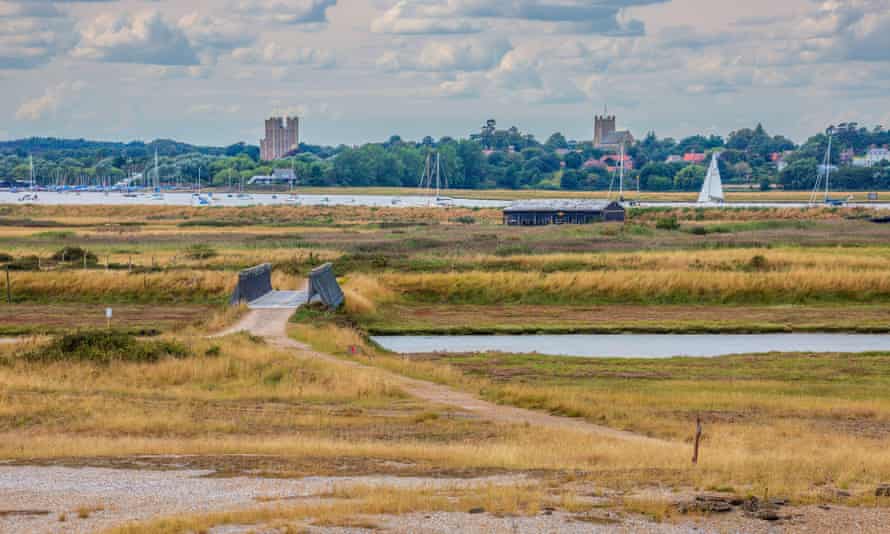
On the face of it, Orford Ness is merely a long spit of shingle, notable for its flora and fauna. Hares and deer can be spotted gadding about the horned poppies and sea figs. Distressingly, gangs of ought-to-know-better fly-tippers have plonked a load of old concrete bunkers everywhere, plus large quantities of rusting iron. As if this wasn’t bad enough, the scabby concrete silos have attracted plagues of installation artists, conspiracy theorists and heritage experts who claim the scattered ruins are national treasures, relics of several top secret cold-war-era projects, rather than ugly mess. To deter curious tourists, the National Trust has made the place accessible only by a small ferry which must be booked on a Thursday (no kidding), and erected warning signs about bombs. Unexplained men in sunglasses gather along the designated walkways. Women in comfortable shoes pose as wardens on bicycles. It’s all very Midsomer Murders, and extremely weird. Visit with caution.
Cafe: You would think the National Trust might open a 1950s-themed outlet on the Ness where Victoria sponge cake made with radioactive raspberry jam is washed down with dishwater tea, but no, you must return to Orford for refreshments. The Riverside Tearoom does superior paninis, toasties and cakes.
Danes Dyke, Flamborough Head, East Yorkshire
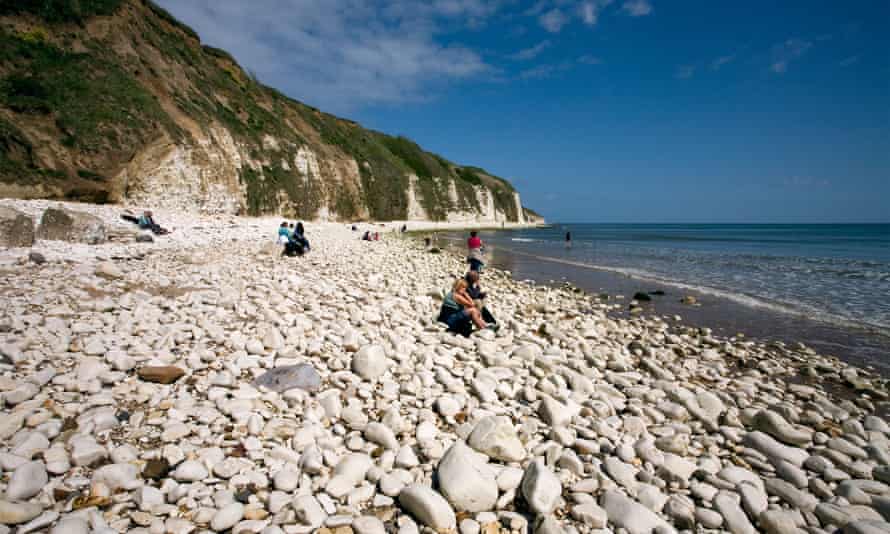
From a car park tucked away in deep woods, you wander down a steep-sided declivity that looks suspiciously man-made. It was. But no one knows who did it. Was it built to defend against Scandinavian visitors in horned helmets, or part of a bronze age northern powerhouse scheme? Whoever was responsible, they cleverly hid the evidence under woodland carpeted with wild garlic and bluebells. Then, quite abruptly, you emerge on a marvellous beach, one entirely made up of smooth white stones the majority of which have been pierced by one or two finger-size holes. Ignorant and illiterate peasants of yesteryear used to blame witches for this, and call the petrified artefacts hag-stones. However, since witches no longer exist, we have no explanation. Baffled scientists stand around, looking baffled. Children like to balance them in towers (I mean the stones). Leaving aside superstition, it is a fact that you cannot tell a lie when speaking through one of the holes in a hag-stone.
Cafe: There is a good refreshment kiosk near the car park. Otherwise head for Scrumdiddlyumptious in Flamborough for top-notch cakes.
Skrinkle Haven, Pembrokeshire
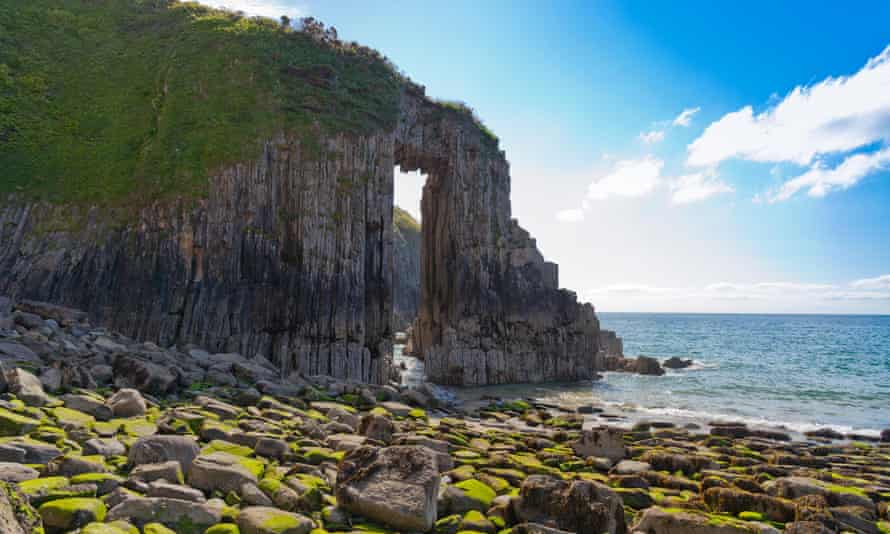
Just because UFOs are infrequently sighted in Pembrokeshire doesn’t mean this stretch of coast isn’t weird. Eight kilometres west of the town is a wonderful and inexplicable beach. Take the long flight of steps down the cliff and you arrive in Church Doors, named after its pair of sea stacks that you can swim through when the tide is right. So far, so normal. But in the cliff face you will see a small cave entrance that turns out to be a tunnel, leading through to Skrinkle Haven’s sandy beach. This geological feature just happens to be the precise length of an alien landing craft.
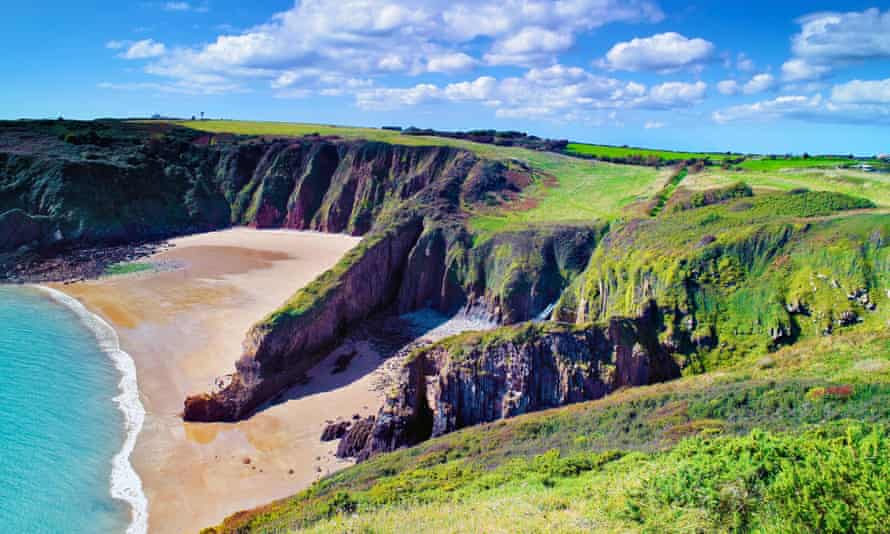
Once on the other side, there is an isolated beach accessible only by that one tunnel (except at low tide when you can simply walk round). South Pembrokeshire has several other contenders too: the sands on Barafundle have coughed up a shipwreck in recent years, but first prize goes to the inaccessible coves west of Stackpole where the ardent abseiler or keen kayaker will discover some very spooky caves indeed.
Cafe: YHA Manorbier has the excellent Skrinkle Tearoom.
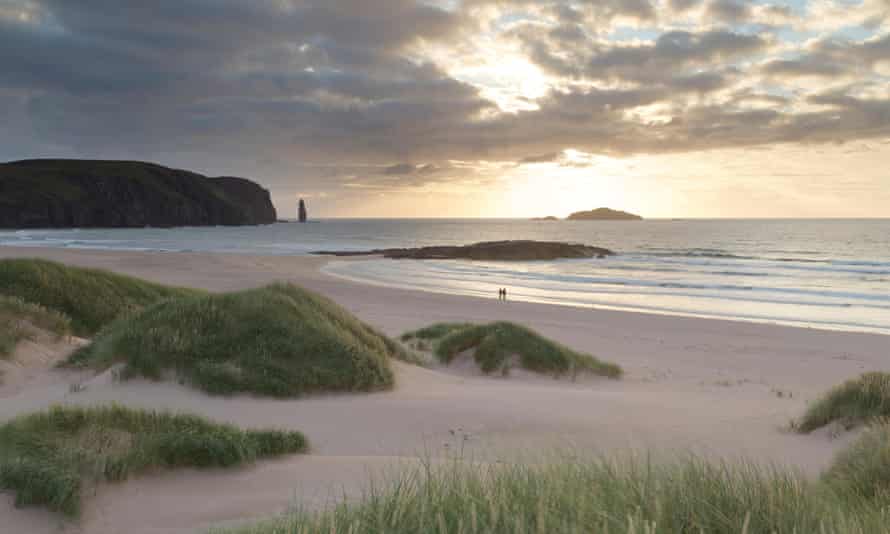
The opportunity to be eaten alive by monsters is one that most savvy travellers welcome, and few British beaches can offer such a guarantee as Sandwood Bay. Hike the four miles across heathery hills to this idyllic stretch of sand on a cloudy summer’s day and you are basically serving yourself up as a feast for the legendary vampire of the Scottish west coast: the midge. However, like Dracula, these bloodsuckers do hate bright sunshine and strong winds so, with luck, can be avoided. On a good day this beach is a miracle of car- and boat-free beauty. Down one end is Am Buachaille seastack, a tower of stony silence; at the other, when I visited, was the body of a dead whale. What more could anyone want? Take head nets, wild camp near the dunes, and pretend you have it to yourself… but you probably won’t because newspapers keep mentioning the place.
Cafe: Take a stove and cafetière.
Seaham, County Durham
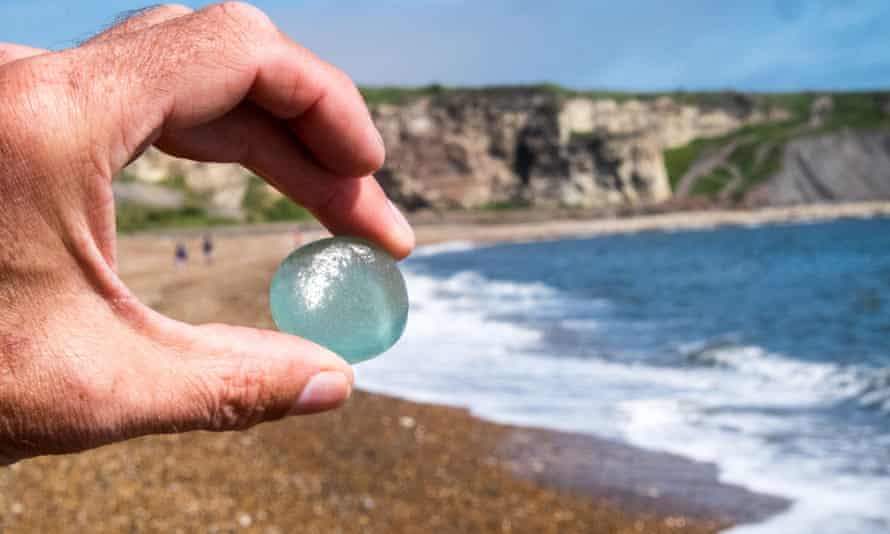
Vane Tempest beach is a short walk north of Seaham, a sand-and-shingle stretch backed by earthy cliffs. And there ends the normality. On any sunny morning you will spot zombies, lots of them, shuffling at a snail’s pace in aimless circles, eyes on the ground. Occasionally an oncoming wave will jerk them comically into life and they will prance, as if operated by an invisible puppet master, for a few seconds. When approached they can be friendly, claiming to be hunting for glass beads, and not part of a zombie flesheater invasion. During the 19th century Seaham became a bottle-producing town, and for decades all the broken glass was dumped offshore. After years of rolling in the deep, the glass is transformed into beads and washed up, only to be pounced upon by collectors from all over the world (on my own visit I met visitors from Lithuania, New Zealand, Italy and Sunderland). Once your eye is attuned, you can pick up a bead every few minutes: most common are clear glass nuggets, but blue and red are the most prized. It’s great fun and if you set the children on it, they’ll zombie-walk for hours without complaining.
Cafe: Seaham has a good selection. Cafe Humbles is excellent.
Tusker Rock and Traeth Mawr, Glamorgan
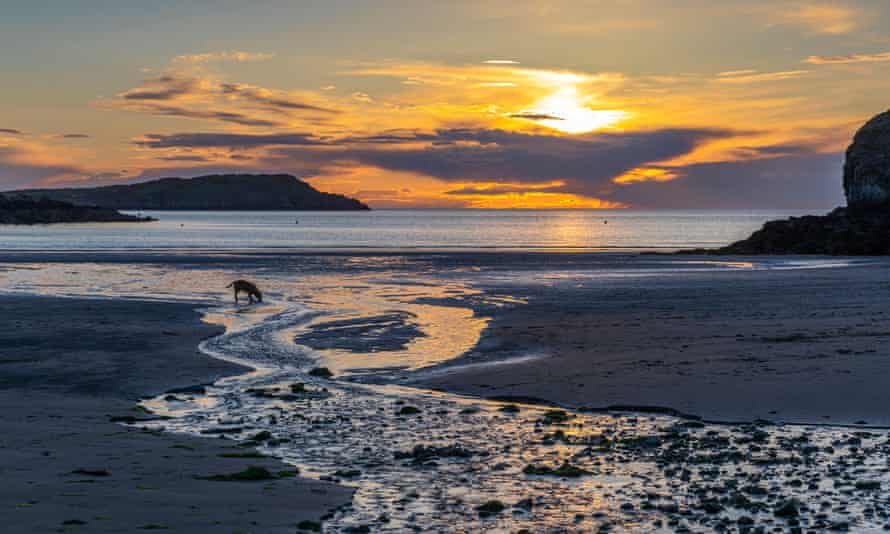
Travellers go far and wide to see a shipwreck on a beach, but what about a beach made of shipwrecks? The drawback is that Tusker Rock is over a mile off Ogmore-by-Sea and accessible only by experienced kayakers: most other boats try and avoid it. This deadly outcrop has claimed so many ships over the centuries that its surface is largely made of twisted metal and boiler plates from various 19th-century wrecks. Fortunately, there are interesting beaches nearby, although you do still need to check the tides for Traeth Mawr, a wonderful long, cliff-backed strand with tidal pools and fossils. As you head north-west, you might spot a mermaid – no, hang on, that’s a naturist. They do hang out around here.
Cafe: The Plough and Harrow at Monknash is nearest and best. Cider is a speciality.
Bradwell-on-Sea, Essex
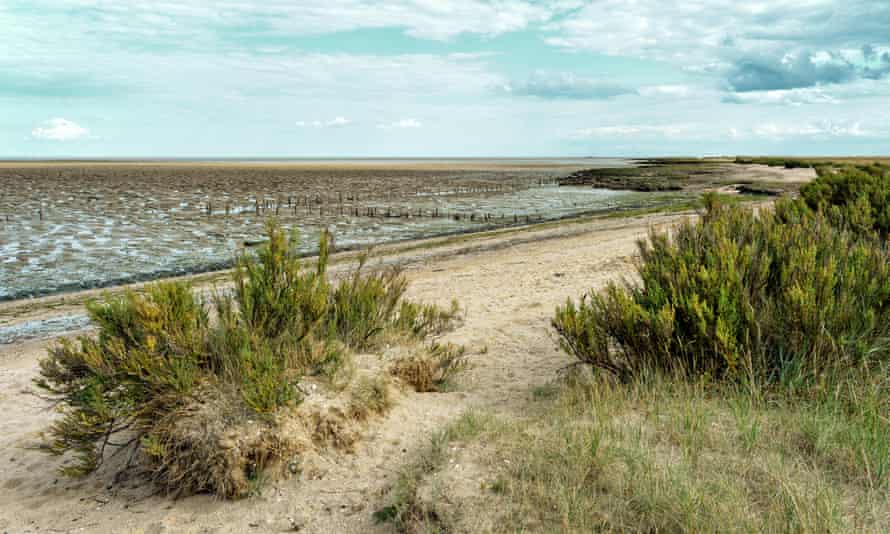
There is nothing like proximity to a nuclear power station to increase one’s appreciation of the natural world, and Essex has one of the best. Perhaps it is the sheer arrogance of planners who decided that this stretch of coast was so remote and worthless that no one would mind, and yet the shingles and mud flats that reach all the way around the Dengie peninsula are a cornucopia of rare wild flowers and fauna, among them a sea blite, a weevil and a jumping spider. OK, so the Dengie is not everyone’s idea of paradise, but aficionados love its vast open skies and austere tranquillity. The best spot for swimmers is near the power station itself, currently wrapped up like a Christo and subject to a proposed development by the China General Nuclear Power Group. What could go wrong?
Cafe: Bradwell Marina has a clubhouse and restaurant with lovely views.
Saltwick Bay, North Yorkshire
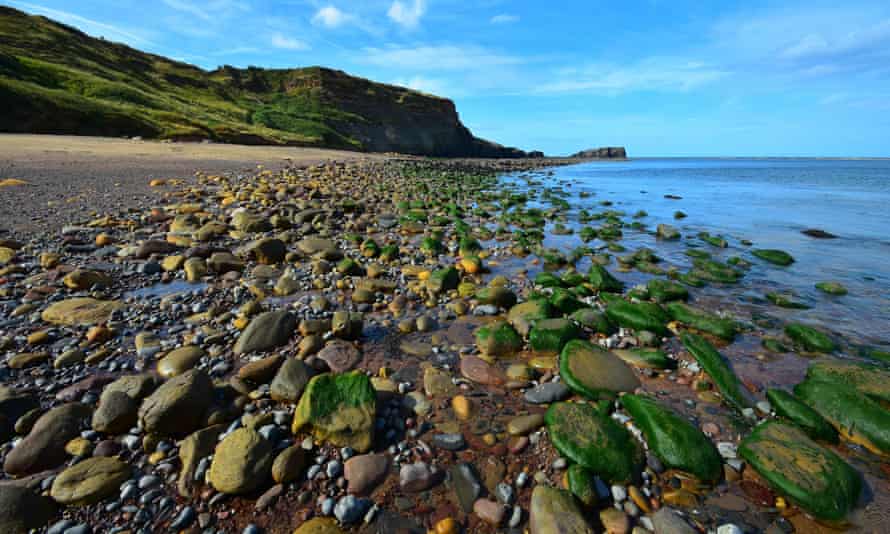
A shipwreck on the beach used to be a mainstay of this coast. In the year 1869 there were 838 of these melancholy happenings on the rocks and beaches between Spurn Head and Teesmouth. Most of these old wrecks are soon lost and forgotten, although the occasional boiler from a steamship survives (pieces of the SS Rosa from 1930 are still visible at North Landing, Flamborough). The Admiral von Tromp is much more recent and still recognisably a boat, actually a trawler that got caught out in storms in the winter of 1976, leading to the tragic drowning of two men. When the tide is out, walk from the sandy beach at Saltwick Bay (a mile south of Whitby). The beach, incidentally, is one of a few where you can readily pick up gemstones: Whitby jet is washed out of the cliffs, particularly in winter storms, and ends up on the shoreline. Fossils are also plentiful.
Cafe: Head south on the coastal path to the fog-signalling station and there is the Hornblower Tea Garden with the best view of any cafe in the UK. Otherwise Whitby has plenty of choice.
Dulas Bay, Anglesey
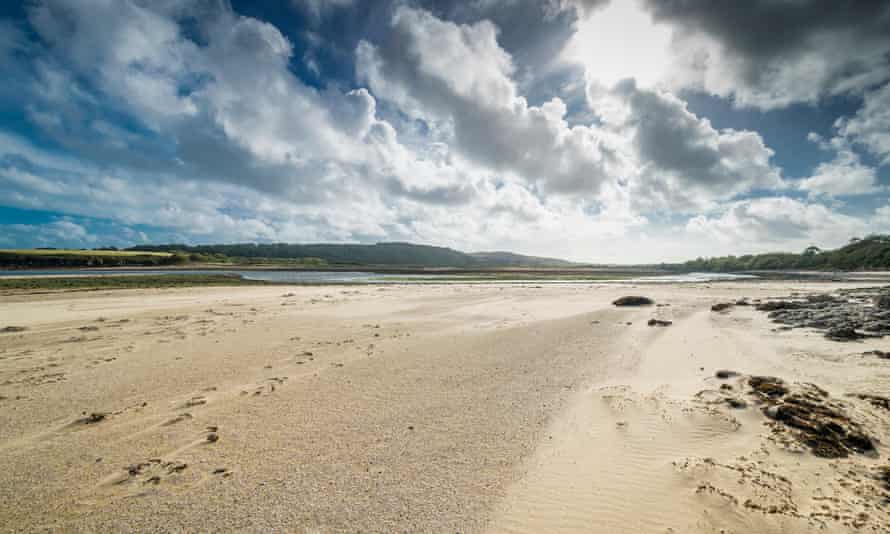
It is not perhaps the most stunning of Anglesey’s beaches, nor the best for swimming or sunbathing, but Dulas Bay is definitely the best for finding gold nuggets. In 1859 the ship Royal Charter was approaching Liverpool after a long voyage from Australia laden down with the fruits of the Ballarat gold rush. Unfortunately, a huge storm blew up and she was wrecked with the loss of around 450 lives (about 140 of them were buried in Llanallgo churchyard, about two miles south of the beach). Much of the treasure was salvaged at the time, but there have been rumours of gold washed ashore so stay alert for bright shiny objects. A little way south is the lovely sandy Traeth y Ora beach. The tragedy of the Royal Charter, plus the 133 other ships wrecked that night, inspired Captain Robert FitzRoy to develop gale warnings and, eventually, the Meteorological Office.
Cafe: Coastal Cafe in nearby Moelfre has excellent fish and chips.
Camas an Lighe, Ardnamurchan, Highlands
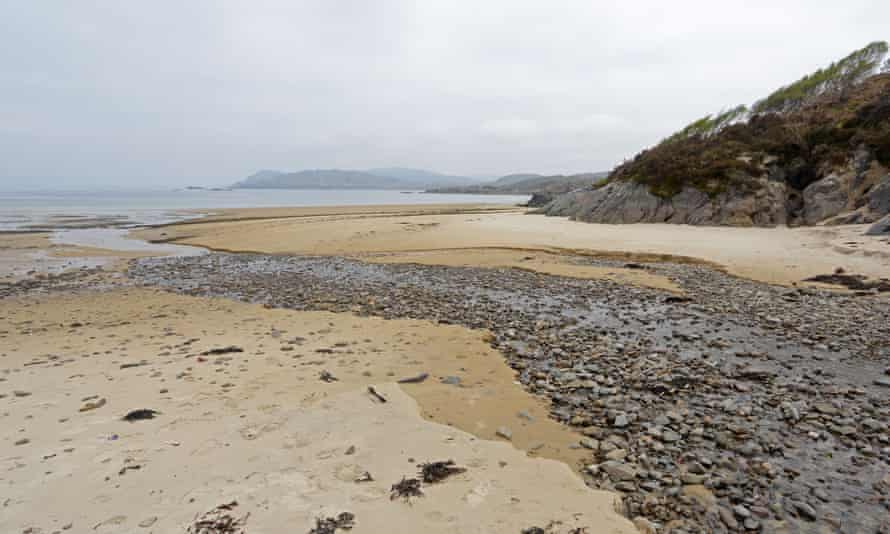
Surely the last thing anybody would want is a noisy beach? But I’m not talking about loud music or drunken laughter; I mean the beach is actually making noise. There are a few places in the UK where the sand itself, moved by the wind or feet, emits a singing or whistling sound. Try Scotland’s Camas an Lighe on the Ardnamurchan peninsula, an isolated and beautiful spot, reputedly the site of a Jacobite battle back in 1745, and definitely some second world war commando training (watch out for unexploded munitions). Don’t expect Joan Sutherland; if the wind and humidity are right, you get an eerie distant whine, not unlike the sound made by an incoming midge mega-swarm. Other whistling sands are at Porthor on the Llyn peninsula and Studland Bay dunes. There are said to be 33 such places in the UK where the size of sand grains and roundness are just right.
Cafe: The Ardnamurchan does not have a lot of cafes, but Cafe Tioram in Acharacle is excellent.
 Top Naija News: Nigerian News, Breaking News Nigeria and World News Top Naija News is a daily news publication in Nigeria, delivering the latest breaking news in Nigeria and around the world.
Top Naija News: Nigerian News, Breaking News Nigeria and World News Top Naija News is a daily news publication in Nigeria, delivering the latest breaking news in Nigeria and around the world.
